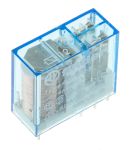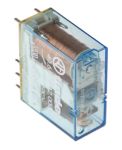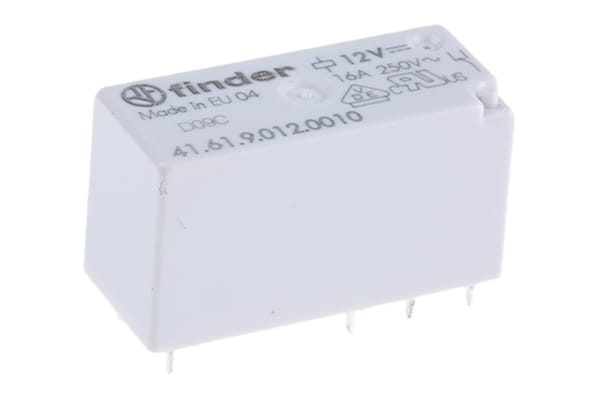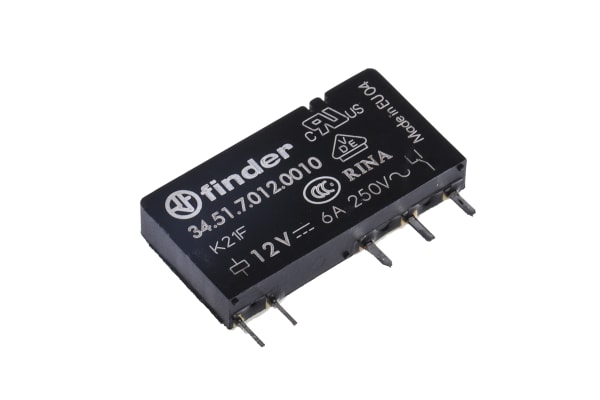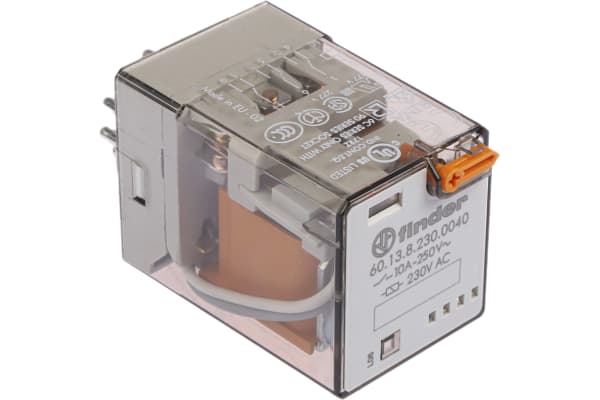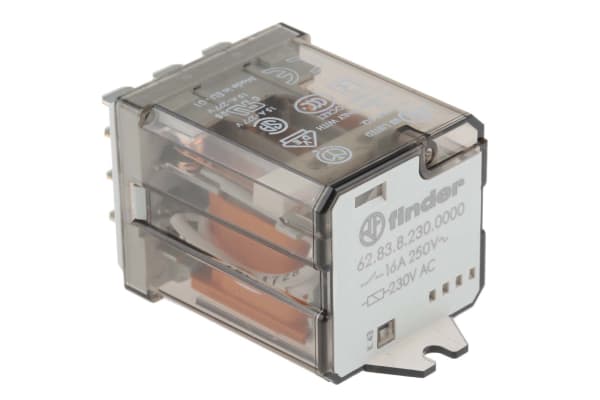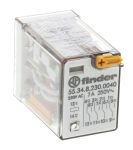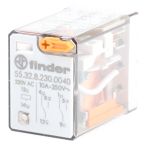Non-Latching Relays
Relays are electrical switches that are operated by electrical impulses with the primary function to open and close a circuit, they can also be referred to as industrial switches. There are 2 main types available, latching and non–latching relays.How do non-latching relays work?Non-latching relays are in a normally closed (NC) position and will stay in this state without power. When power passes through the circuit, the relay switched to a normally open (NO) position by using an internal coil to generate a magnetic force, holding this NO position. Once the current is turned off, it returns to the NC position. This makes non-latching relays well suited to push-button applications like keyboards and micro-controller input buttons.What are non-latching relays used for?Non-latching relays are highly durable and versatile components, making their performance long lasting and suitable for use in a wide range of applications, such as:Automotive enginesHousehold appliancesIndustrial machineryMedical equipmentTelecommunications equipmentWhat is the difference between latching and non-latching relays?Both types of relays in similar in design and function, however, a significant difference between them is that a latching relay will remain in the last position it when it was last powered, whereas a non-latching goes back to its normal position. This makes each more type of relay suitable for different applications. Considerations when selecting a relayWhen choosing a relay, it is important to consider a number of specifications to ensure it is fit for purpose, some factors include:Coil voltage – the required voltage to actuate the switching mechanism. If a voltage is too high this could damage the components, if it is too low then it will not actuate. Contact configuration – This is the state the contacts are in without power. For example SPST, single pole single throw.Contact material – the relay contacts are available in many materials that have certain properties. Common materials are gold, silver, tin oxide and nickel Coil power – the amount of power (watts) the coil operates at. This must match the power in the circuit for correct function. Coil resistance – the amount of resistance (ohms) in the circuit that the coil creates.
-
Finder, 12V ac/dc Coil Non-Latching Relay DPNO, 25A Switching Current DIN Rail, 2 Pole, 22.32.0.012.4320
IDR642,241.47 -
Finder, 12V dc Coil Non-Latching Relay 3PDT, 10A Switching Current Plug In, 3 Pole, 60.13.9.012.0040
IDR334,599.10 -
Finder, 12V dc Coil Non-Latching Relay 4PDT, 7A Switching Current PCB Mount, 4 Pole, 55.14.9.012.0000
IDR197,402.98 -
Finder, 12V dc Coil Non-Latching Relay 4PDT, 7A Switching Current Plug In, 4 Pole, 55.34.9.012.0040
IDR175,376.08 -
Finder, 12V dc Coil Non-Latching Relay DPDT, 10A Switching Current PCB Mount, 2 Pole, 40.62.7.012.4000
IDR132,685.85 -
Finder, 12V dc Coil Non-Latching Relay DPDT, 10A Switching Current Plug In, 2 Pole, 55.32.9.012.0040
IDR164,362.63 -
Finder, 12V dc Coil Non-Latching Relay DPDT, 12A Switching Current Plug In, 2 Pole, 56.32.9.012.0040
IDR181,459.70 -
Finder, 12V dc Coil Non-Latching Relay DPDT, 8A Switching Current PCB Mount, 2 Pole, 40.52.7.012.0000
IDR94,610.78 -
Finder, 12V dc Coil Non-Latching Relay DPDT, 8A Switching Current PCB Mount, 2 Pole, 46.52.9.012.0074
IDR168,977.79 -
Finder, 12V dc Coil Non-Latching Relay DPNO, 20A Switching Current DIN Rail, 2 Pole, 22.22.9.012.4000
IDR570,811.38 -
Finder, 12V dc Coil Non-Latching Relay SPDT, 10A Switching Current PCB Mount Single Pole, 40.31.7.012.0000
IDR66,185.59 -
Finder, 12V dc Coil Non-Latching Relay SPDT, 16A Switching Current PCB Mount Single Pole, 40.61.7.012.0000
IDR93,981.44 -
Finder, 12V dc Coil Non-Latching Relay SPDT, 16A Switching Current PCB Mount Single Pole, 41.61.9.012.0010
IDR114,854.55 -
Finder, 12V dc Coil Non-Latching Relay SPDT, 16A Switching Current Plug In Single Pole, 46.61.9.012.0040
IDR122,721.30 -
Finder, 12V dc Coil Non-Latching Relay SPDT, 6A Switching Current PCB Mount Single Pole, 34.51.7.012.0010
IDR107,722.03 -
Finder, 230V ac Coil Non-Latching Relay 3P-NO, 16A Switching Current Plug In, 3 Pole, 62.83.8.230.0300
IDR249,743.09 -
Finder, 230V ac Coil Non-Latching Relay 3PDT, 10A Switching Current Plug In, 3 Pole, 55.33.8.230.0010
IDR263,798.35 -
Finder, 230V ac Coil Non-Latching Relay 3PDT, 10A Switching Current Plug In, 3 Pole, 60.13.8.230.0040
IDR300,195.18 -
Finder, 230V ac Coil Non-Latching Relay 3PDT, 16A Switching Current Plug In, 3 Pole, 62.33.8.230.0040
IDR305,229.90 -
Finder, 230V ac Coil Non-Latching Relay 3PDT, 16A Switching Current Plug In, 3 Pole, 62.83.8.230.0000
IDR337,536.02 -
Finder, 230V ac Coil Non-Latching Relay 4PDT, 12A Switching Current Plug In, 4 Pole, 56.34.8.230.0040
IDR451,446.56 -
Finder, 230V ac Coil Non-Latching Relay 4PDT, 7A Switching Current Plug In, 4 Pole, 55.34.8.230.0040
IDR223,205.92 -
Finder, 230V ac Coil Non-Latching Relay 4PDT, 7A Switching Current Plug In, 4 Pole, 55.34.8.230.0054
IDR227,506.41 -
Finder, 230V ac Coil Non-Latching Relay DPDT, 10A Switching Current Plug In, 2 Pole, 55.32.8.230.0040
IDR202,437.70










